Calculations with Vectors (SQA National 5 Physics): Revision Note
Exam code: X857 75
Calculations with vectors
Two vectors can be combined to produce a resultant vector
The resultant vector describes the combined effect of both vectors
Vectors may be
in one dimension (along a straight line)
at right angles to each other
Combining vectors on a straight line
Vectors acting along the same line are added or subtracted
Vectors acting in the same direction are added together
Vectors acting in opposite directions are subtracted from each other
For two vectors act in opposite directions:
if they have equal magnitudes, the resultant vector will be zero
if they have unequal magnitudes, the resultant vector will act in the same direction as the vector with the larger magnitude
Consider a man walking along a travelator (conveyor belt)
The travelator is moving at a constant velocity of 1 m s-1 to the right
The man is walking at a constant speed of 2 m s-1
The magnitude of the man's velocity depends on the direction he walks along the travelator
If he walks in the same direction as the travelator's movement, i.e. at a velocity of 2 m s-1 to the right, then his velocity will be:
to the right
If he walks in the opposite direction to the travelator's movement, i.e. at a velocity of 2 m s-1 to the left, then his velocity will be:
to the left
Resultant velocity of a man on a travelator

Combining vectors at right angles
Finding the magnitude of the vector
The magnitude of the resultant vector can be found using Pythagoras' theorem

For two vectors,
and
, acting at right angles, the resultant vector
is the hypotenuse of the triangle
Note: The vectors must always be drawn head-to-tail

Finding the direction of the vector
The direction of the resultant vector can be found using trigonometry
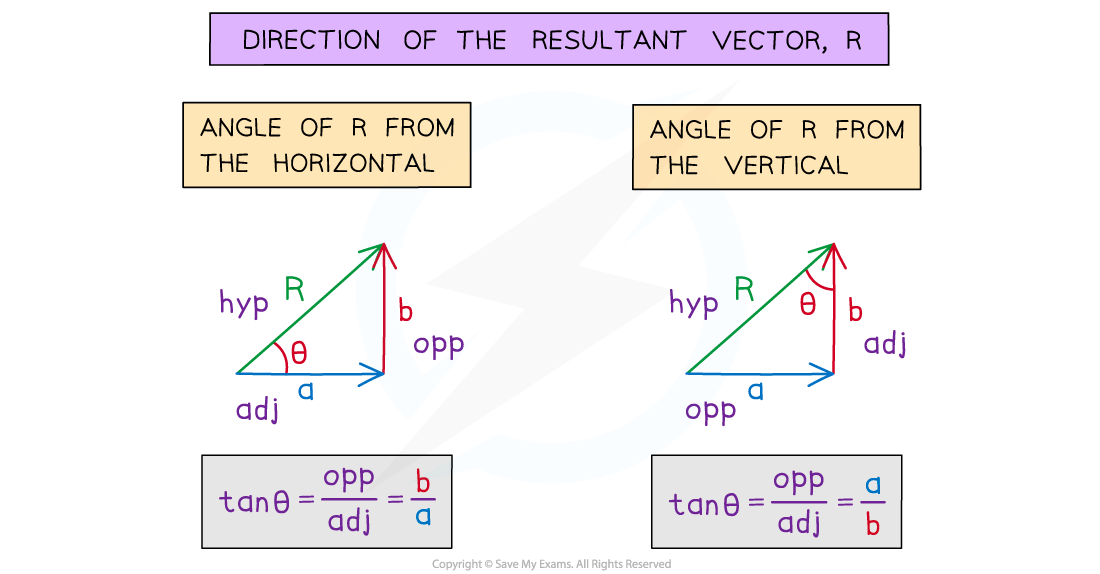
For two vectors,
and
, acting at right angles, where
is opposite to the angle and
is adjacent, use the inverse tan function to find the angle
If a plane flies 140 km south from Aberdeen, and then 130 km west to Glasgow, the magnitude of the displacement is:
The direction of the displacement from Aberdeen to Glasgow is:
, or
Therefore, the resultant displacement is 190 km on a bearing of 223 (or 43° west of south)
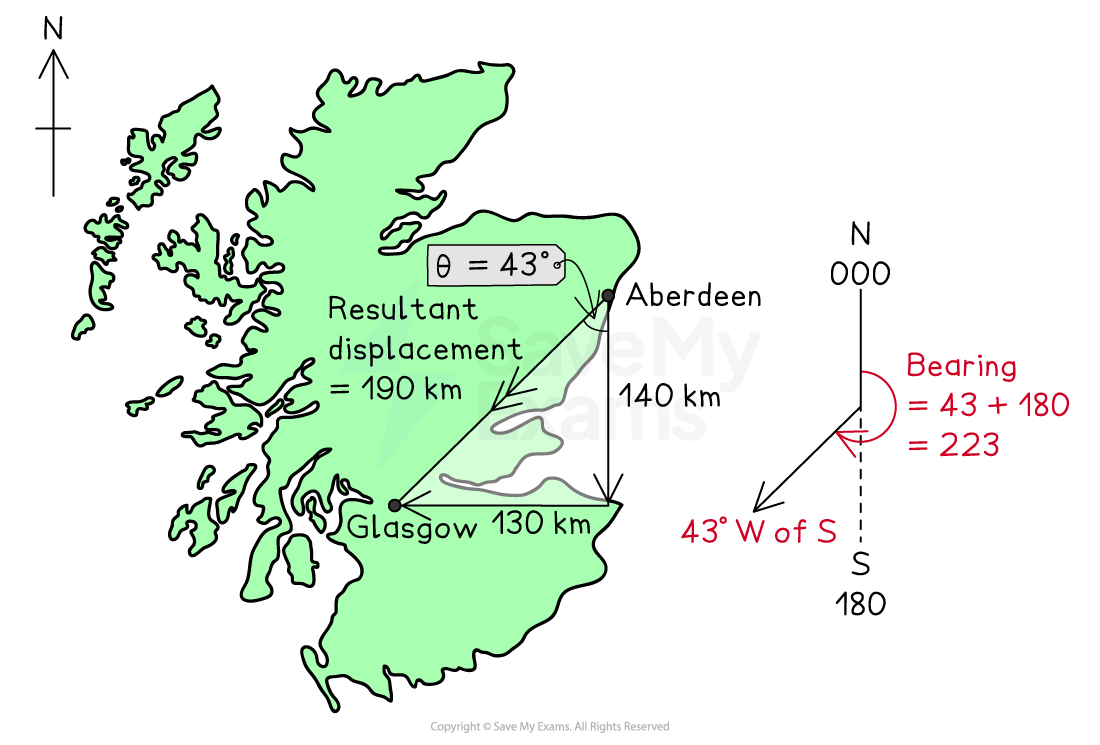
Examiner Tips and Tricks
When a question includes compass points or bearings, this gives you a point of reference between your start point and end point, so you must give the direction of any vector relative to a point on a compass or as a bearing.
When using a bearing, follow these three rules:
They are measured from due North
North is usually straight up on a scale drawing or map, and should be labelled on the diagram
They are measured clockwise
The angle should always be written with 3 digits, and the degree symbol is not needed
059 instead of just 59°
Therefore, you should practice compass directions and their respective bearings if you are not confident with these
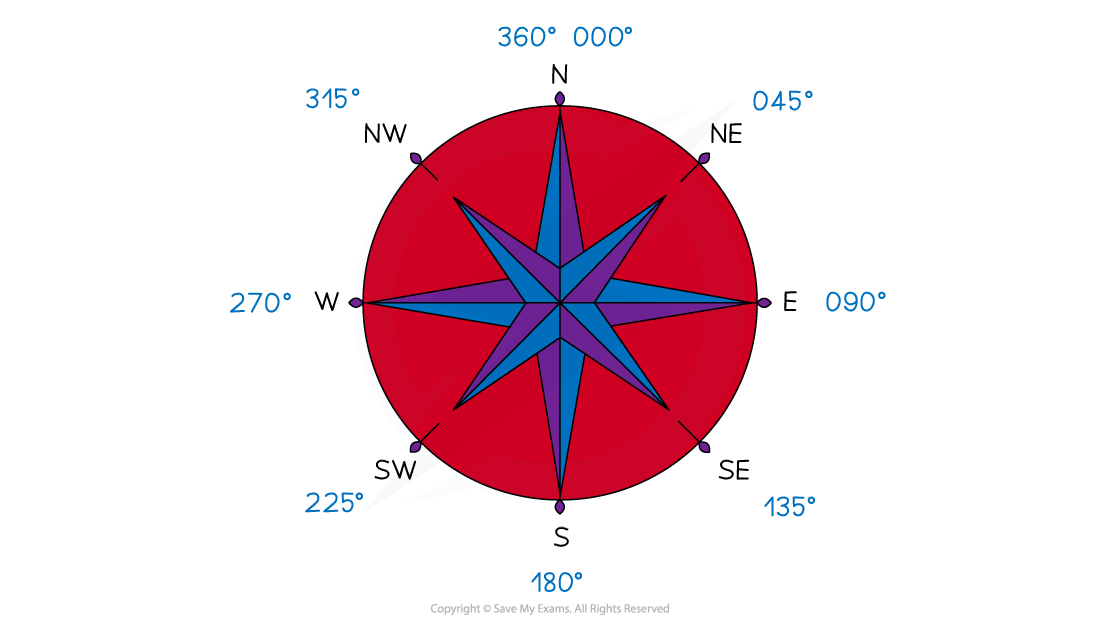
Worked Example
A boat travels across a river that is flowing due east at a speed of 1.5 m s-1. The boat starts from the north bank of the river and moves at a constant speed of 3.5 m s-1 towards the south bank.

Determine the magnitude and direction of the boat's resultant velocity.
Answer:
Step 1: Draw a vector triangle to identify the resultant vector and its direction
The vectors should be drawn tip-to-tail
The resultant
is drawn from the start of the first vector to the end of the second
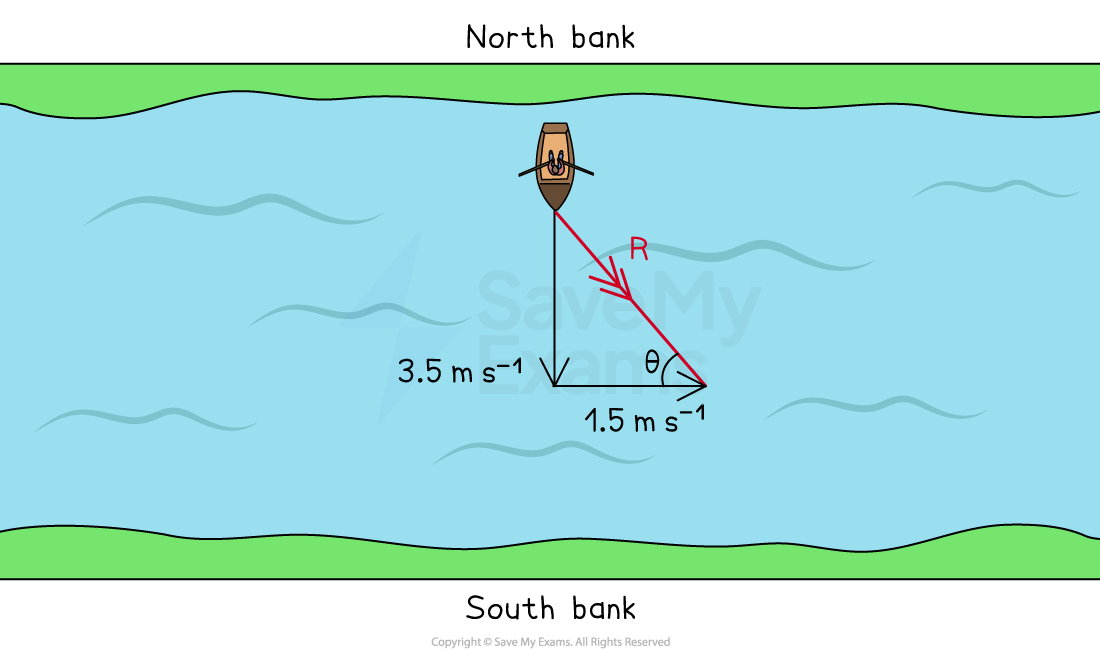
Step 2: Calculate the magnitude of the resultant using Pythagoras' theorem
Step 3: Calculate the direction of the resultant using trigonometry
Step 4: State the final answer, complete with magnitude and direction
Since the question is given in terms of compass points, the direction can be given as
a bearing of
south of east
east of south
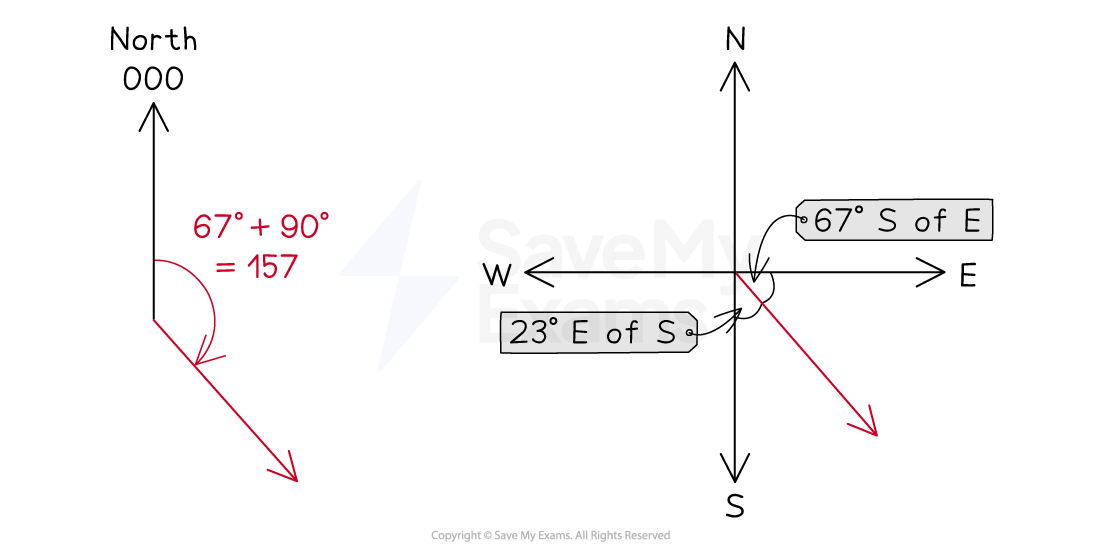
Therefore, the boat's resultant velocity is
on a bearing of
Examiner Tips and Tricks
If the question specifically asks you to use the calculation or scale diagram, you must solve the problem as asked. However, if the choice is left up to you, then either method will lead to the correct answer.
Using scale diagrams sometimes feels easier than calculating, but once you are confident with using Pythagoras' theorem and trigonometry, you may find calculating a quicker and more accurate method.
This revision note covers how to calculate the angle using the tangent formula, but equally, the trigonometric ratios for sine or cosine could also be used, depending on which values you have.


Unlock more, it's free!
Did this page help you?